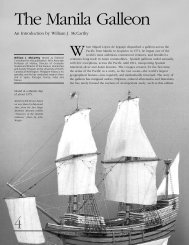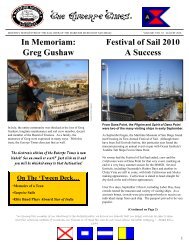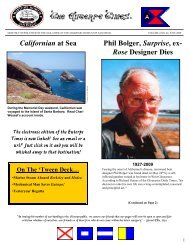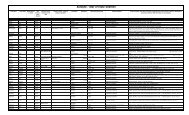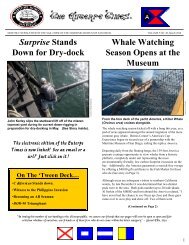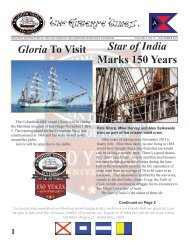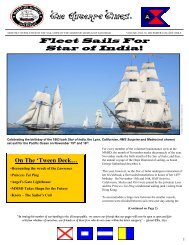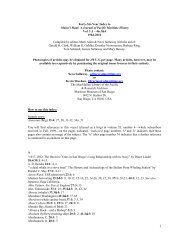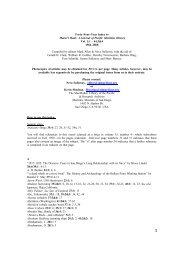Early American Trade with China - Maritime Museum of San Diego
Early American Trade with China - Maritime Museum of San Diego
Early American Trade with China - Maritime Museum of San Diego
Create successful ePaper yourself
Turn your PDF publications into a flip-book with our unique Google optimized e-Paper software.
The early <strong>American</strong> <strong>China</strong> trade had three main<br />
branches: voyages made to <strong>China</strong> directly from<br />
the United States; fur trading voyages made by<br />
way <strong>of</strong> the northwest coast <strong>of</strong> America; and voyages<br />
made in the Pacific Ocean for furs, seal skins, aromatic<br />
sandalwood, bêche-de-mer (dried sea cucumbers—a<br />
Chinese delicacy), and other Pacific products that could<br />
be sold at and around Canton.<br />
This trade’s growth in its first two decades, from 1784<br />
to 1804, was extraordinary. The first <strong>American</strong> merchant<br />
ship arrived alone in 1784, and none followed in 1785,<br />
yet <strong>with</strong>in a decade <strong>American</strong> vessels were soon <strong>of</strong>ten as<br />
numerous as the English Company’s ships or their intraregional<br />
“Country” traders from India and the East. In<br />
one year, 1803, <strong>American</strong> vessels outnumbered those <strong>of</strong><br />
the British and all other nations combined, and over the<br />
first two decades they averaged over twenty percent <strong>of</strong><br />
the total number <strong>of</strong> ships visiting <strong>China</strong>.<br />
Almost all the <strong>American</strong> vessels, however, were quite<br />
small; most were about one quarter the size <strong>of</strong> the<br />
stately East Indiamen sent from Europe. In 1802 and<br />
1803 some fifty-nine U.S. vessels averaged just under<br />
three hundred tons apiece, while those <strong>of</strong> the British<br />
each averaged almost 1,200 tons. In July 1787, after<br />
cruising alone halfway round the globe, the crewmen <strong>of</strong><br />
one <strong>of</strong> the first <strong>American</strong> ships to arrive, the little 120-<br />
ton Columbia, were much amused when haughty<br />
Company <strong>of</strong>ficials mistook them for a mere tender to<br />
some larger vessel like their own.<br />
The outstanding feature <strong>of</strong> the <strong>American</strong>s’ trade at<br />
Canton was that they bought three times as much as<br />
they brought. This persistent deficit between imports and<br />
exports required that generally two-thirds <strong>of</strong> <strong>American</strong><br />
purchases had to be paid for <strong>with</strong> silver coin—an<br />
especially scarce commodity in the infant U.S.<br />
15<br />
“ F o r A l l t h e T e a i n C h i n a ” : A m e r i c a , A u s t r a l i a , a n d T h e C h i n a T r a d e



